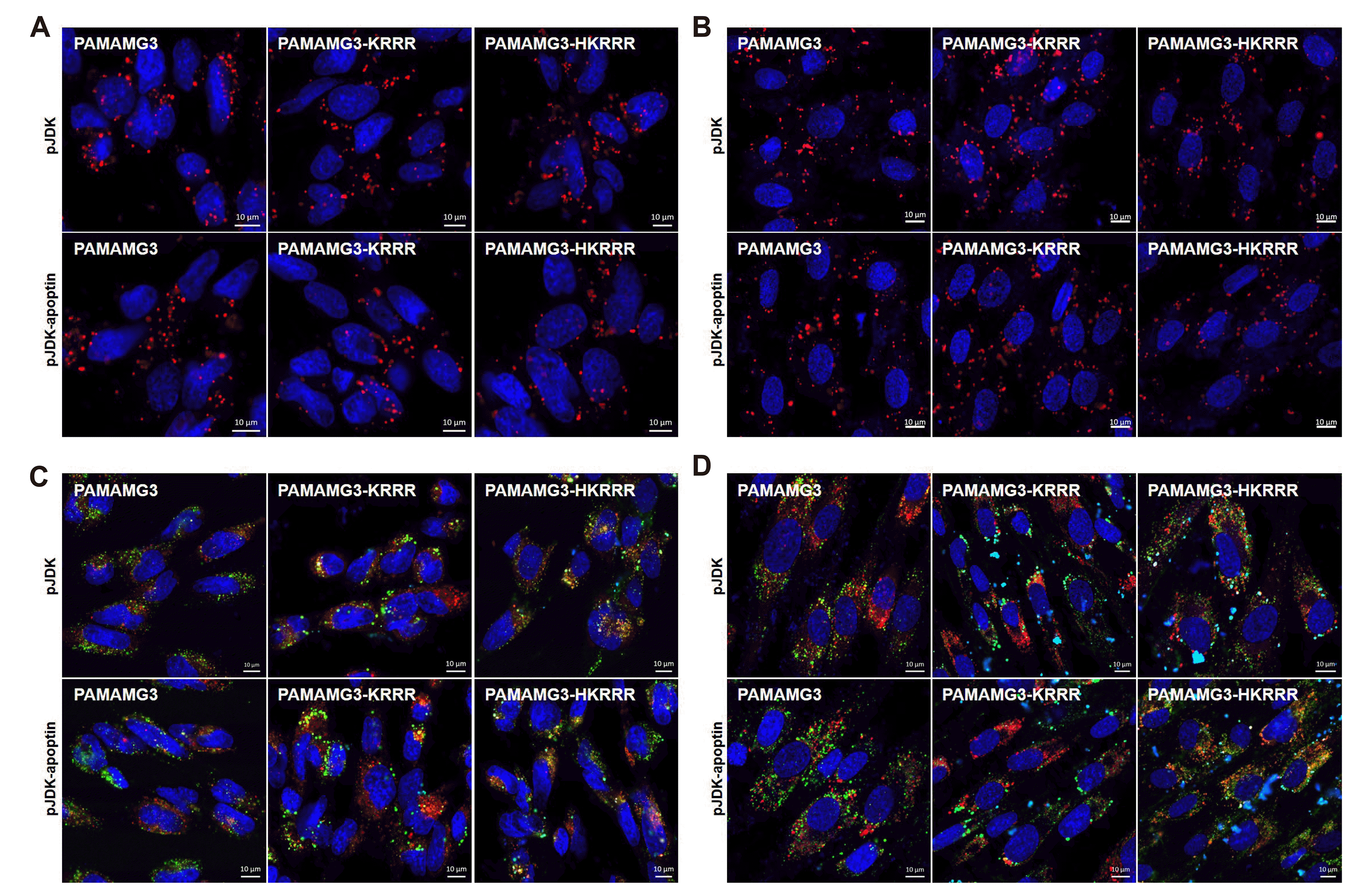1. Zeng W, Tang Z, Li Y, Yin G, Liu Z, Gao J, Chen Y, Chen F. 2020; Patient-derived xenografts of different grade gliomas retain the heterogeneous histological and genetic features of human gliomas. Cancer Cell Int. 20:1. DOI:
10.1186/s12935-019-1086-5. PMID:
31908598. PMCID:
PMC6941273.

2. Assi H, Candolfi M, Baker G, Mineharu Y, Lowenstein PR, Castro MG. 2012; Gene therapy for brain tumors: basic developments and clinical implementation. Neurosci Lett. 527:71–77. DOI:
10.1016/j.neulet.2012.08.003. PMID:
22906921. PMCID:
PMC3462660.

3. Reardon DA, Wen PY. 2006; Therapeutic advances in the treatment of glioblastoma: rationale and potential role of targeted agents. Oncologist. 11:152–164. DOI:
10.1634/theoncologist.11-2-152. PMID:
16476836.

5. Pourgholi F, Hajivalili M, Farhad JN, Kafil HS, Yousefi M. 2016; Nanoparticles: novel vehicles in treatment of glioblastoma. Biomed Pharmacother. 77:98–107. DOI:
10.1016/j.biopha.2015.12.014. PMID:
26796272.

8. Dunbar CE, High KA, Joung JK, Kohn DB, Ozawa K, Sadelain M. 2018; Gene therapy comes of age. Science. 359:eaan4672. DOI:
10.1126/science.aan4672. PMID:
29326244.

10. Choi YS, Lee MY, David AE, Park YS. 2014; Nanoparticles for gene delivery: therapeutic and toxic effects. Mol Cell Toxicol. 10:1–8. DOI:
10.1007/s13273-014-0001-3.

11. Wang LH, Wu T, Wu DC, You YZ. 2016; Bioreducible gene delivery vector capable of self-scavenging the intracellular-generated ROS exhibiting high gene transfection. ACS Appl Mater Interfaces. 8:19238–19244. DOI:
10.1021/acsami.6b04327. PMID:
27420138.

12. Nitta SK, Numata K. 2013; Biopolymer-based nanoparticles for drug/gene delivery and tissue engineering. Int J Mol Sci. 14:1629–1654. DOI:
10.3390/ijms14011629. PMID:
23344060. PMCID:
PMC3565338.

13. Hu J, Zhu M, Liu K, Fan H, Zhao W, Mao Y, Zhang Y. 2016; A biodegradable polyethylenimine-based vector modified by trifunctional peptide R18 for enhancing gene transfection efficiency in vivo. PLoS One. 11:e0166673. DOI:
10.1371/journal.pone.0166673. PMID:
27935984. PMCID:
PMC5147860.

14. Abbasi E, Aval SF, Akbarzadeh A, Milani M, Nasrabadi HT, Joo SW, Hanifehpour Y, Nejati-Koshki K, Pashaei-Asl R. 2014; Dendrimers: synthesis, applications, and properties. Nanoscale Res Lett. 9:247. DOI:
10.1186/1556-276X-9-247. PMID:
24994950. PMCID:
PMC4074873.

15. Taghavi PAN, Mutlu P, Khodadust R, Gunduz U. 2013; Poly amidoamine PAMAM nanoparticles: synthesis and biomedical applications. Hacet J Biol Chem. 41:289–299.
16. Dutta T, Jain NK, McMillan NA, Parekh HS. 2010; Dendrimer nanocarriers as versatile vectors in gene delivery. Nanomedicine. 6:25–34. DOI:
10.1016/j.nano.2009.05.005. PMID:
19450708.
17. Kolhatkar RB, Kitchens KM, Swaan PW, Ghandehari H. 2007; Surface acetylation of polyamidoamine (PAMAM) dendrimers decreases cytotoxicity while maintaining membrane permeability. Bioconjug Chem. 18:2054–2060. DOI:
10.1021/bc0603889. PMID:
17960872.

18. Li J, Han Y, Lu Y, Song B, Zhao M, Hu H, Chen D. 2018; A novel disulfide bond-mediated cleavable RGD-modified PAMAM nanocomplex containing nuclear localization signal HMGB1 for enhancing gene transfection efficiency. Int J Nanomedicine. 13:7135–7153. DOI:
10.2147/IJN.S182445. PMID:
30464464. PMCID:
PMC6228086.

19. Li J, Liang H, Liu J, Wang Z. 2018; Poly (amidoamine) (PAMAM) dendrimer mediated delivery of drug and pDNA/siRNA for cancer therapy. Int J Pharm. 546:215–225. DOI:
10.1016/j.ijpharm.2018.05.045. PMID:
29787895.

20. Lee J, Jung J, Kim YJ, Lee E, Choi JS. 2014; Gene delivery of PAMAM dendrimer conjugated with the nuclear localization signal peptide originated from fibroblast growth factor 3. Int J Pharm. 459:10–18. DOI:
10.1016/j.ijpharm.2013.11.027. PMID:
24275448.

21. Lee J, Lee S, Kwon YE, Kim YJ, Choi JS. 2019; Gene delivery by PAMAM dendrimer conjugated with the nuclear localization signal peptide derived from influenza B virus nucleoprotein. Macromol Res. 27:360–368. DOI:
10.1007/s13233-019-7057-9.

22. Rollano Peñaloza OM, Lewandowska M, Stetefeld J, Ossysek K, Madej M, Bereta J, Sobczak M, Shojaei S, Ghavami S, Łos MJ. 2014; Apoptins: selective anticancer agents. Trends Mol Med. 20:519–528. DOI:
10.1016/j.molmed.2014.07.003. PMID:
25164066.

24. Maddika S, Booy EP, Johar D, Gibson SB, Ghavami S, Los M. 2005; Cancer-specific toxicity of apoptin is independent of death receptors but involves the loss of mitochondrial membrane potential and the release of mitochondrial cell-death mediators by a Nur77-dependent pathway. J Cell Sci. 118(Pt 19):4485–4493. DOI:
10.1242/jcs.02580. PMID:
16179607.

25. Hou Z, Mao J, Lu Y, Li L. 2018; rApoptin induces apoptosis in human breast cancer cells via phosphorylation of Nur77 and Akt. Biochem Biophys Res Commun. 498:221–227. DOI:
10.1016/j.bbrc.2018.02.204. PMID:
29501489.

26. An S, Nam K, Choi S, Bai CZ, Lee Y, Park JS. 2013; Nonviral gene therapy in vivo with PAM-RG4/apoptin as a potential brain tumor therapeutic. Int J Nanomedicine. 8:821–834. DOI:
10.2147/IJN.S39072. PMID:
23589689. PMCID:
PMC3622651.
27. Bae Y, Green ES, Kim GY, Song SJ, Mun JY, Lee S, Park JI, Park JS, Ko KS, Han J, Choi JS. 2016; Dipeptide-functionalized polyamidoamine dendrimer-mediated apoptin gene delivery facilitates apoptosis of human primary glioma cells. Int J Pharm. 515:186–200. DOI:
10.1016/j.ijpharm.2016.09.083. PMID:
27732896.

28. Bae Y, Jung MK, Song SJ, Green ES, Lee S, Park HS, Jeong SH, Han J, Mun JY, Ko KS, Choi JS. 2017; Functional nanosome for enhanced mitochondria-targeted gene delivery and expression. Mitochondrion. 37:27–40. DOI:
10.1016/j.mito.2017.06.005. PMID:
28669809.

29. Holder AL, Goth-Goldstein R, Lucas D, Koshland CP. 2012; Particle-induced artifacts in the MTT and LDH viability assays. Chem Res Toxicol. 25:1885–1892. DOI:
10.1021/tx3001708. PMID:
22799765. PMCID:
PMC3446248.

30. Liu BR, Lo SY, Liu CC, Chyan CL, Huang YW, Aronstam RS, Lee HJ. 2013; Endocytic trafficking of nanoparticles delivered by cell-penetrating peptides comprised of nona-arginine and a penetration accelerating sequence. PLoS One. 8:e67100. DOI:
10.1371/journal.pone.0067100. PMID:
23840594. PMCID:
PMC3694042.

31. Elefantova K, Lakatos B, Kubickova J, Sulova Z, Breier A. 2018; Detection of the mitochondrial membrane potential by the cationic dye JC-1 in L1210 cells with massive overexpression of the plasma membrane ABCB1 drug transporter. Int J Mol Sci. 19:1985. DOI:
10.3390/ijms19071985. PMID:
29986516. PMCID:
PMC6073605.

33. Uram Ł, Szuster M, Gargasz K, Filipowicz A, Wałajtys-Rode E, Wołowiec S. 2013; In vitro cytotoxicity of the ternary PAMAM G3-pyridoxal-biotin bioconjugate. Int J Nanomedicine. 8:4707–4720. DOI:
10.2147/IJN.S53254. PMID:
24376351. PMCID:
PMC3864882.













 PDF
PDF Citation
Citation Print
Print


 XML Download
XML Download